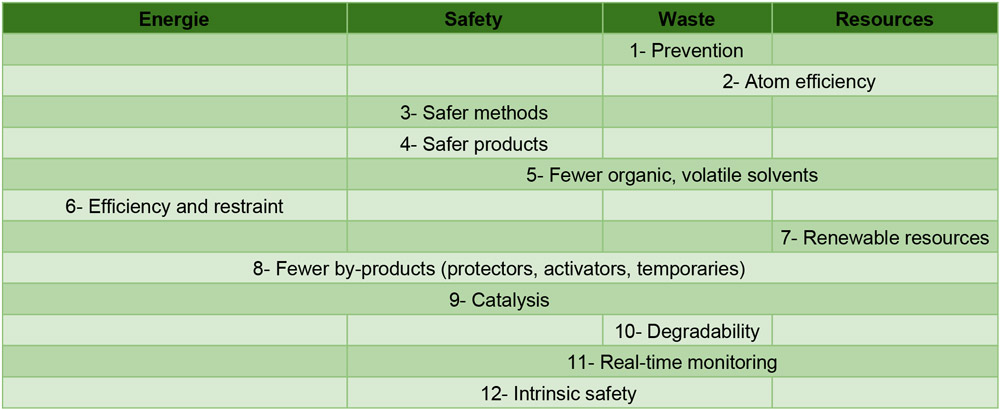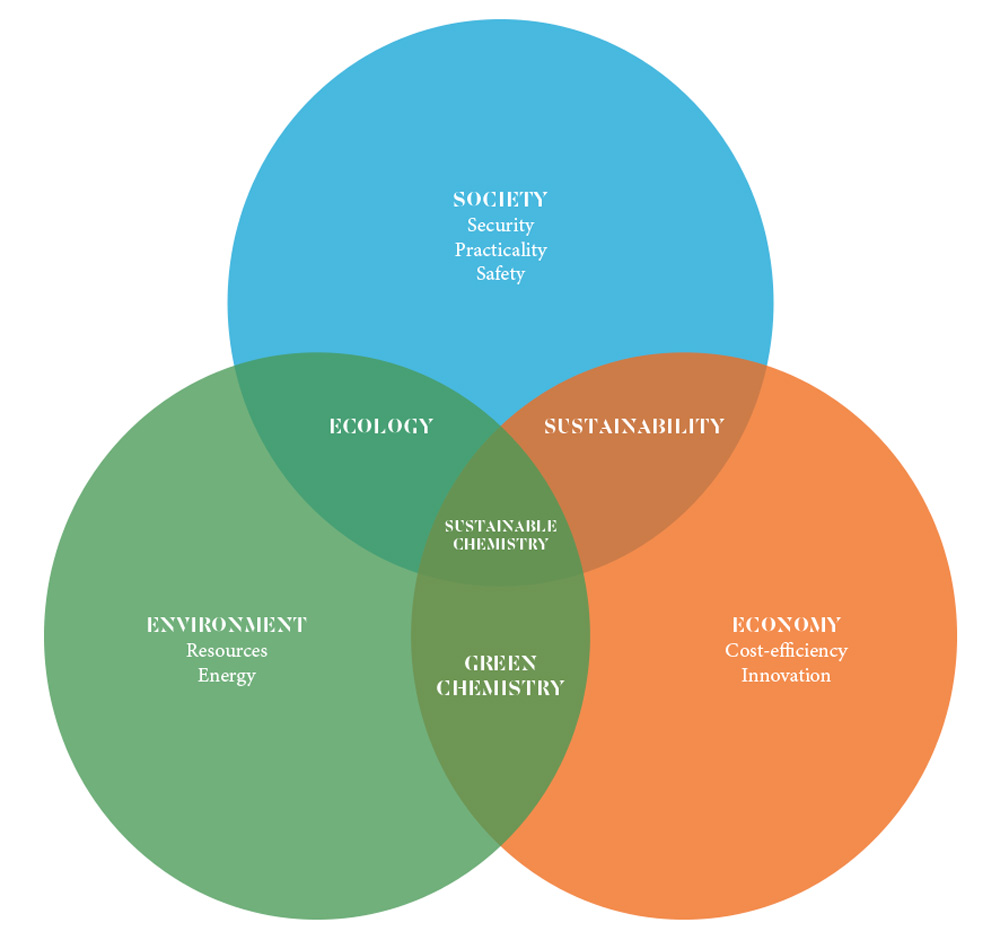Cette publication est également disponible en :
Français
This article marks the beginning of our partnership with Nez throughout which we will share content regularly on the science of perfume. This may include articles based on results from our research carried out at Université Côte d’Azur, as well as those of laboratories we are partnered with in the interdisciplinary O3 group at the CNRS, industrial laboratories who also study perfume, and other research institutes. We also aim to analyse perfume industry news from the point of view of a chemist, such as the arrival of new ingredients on the market.
In this first article, and in order to set the scene, we would like to start off by discussing sustainable chemistry and the spectacular impact that we have observed on the aroma, perfume and cosmetics industries over the past few years (Figure 1). Before getting to the heart of the matter, we would like to draw your attention to the fact that this subject is currently evolving so we cannot examine it thoroughly. Moreover, we do not intend to congratulate or attribute labels but simply to present several aspects and initiatives of the industry and explain their scientific motives.
Sustainable chemistry is a concept and practice in chemistry set against the well-known context of sustainable development, harmoniously respecting the three foundations: environment, economy and society. Resources of organic chemistry (this branch being linked with living organisms and compounds of carbon, hydrogen, oxygen and some other heteroelements such as nitrogen, sulphur and phosphorous) have long been produced from petrol. The necessary transition towards renewable resources produced from biomass, on a timescale that is compatible with human activity, has become a key issue in our society. The aim is to limit development, develop restraint and avoid wasteful consumption of resources, energy and funds. This transition towards processes sustainable for the environment, the economy and society, will bring new knowledge and technology, but it is already making headway in perfume chemistry.
The concept of sustainable chemistry, which was popularised in 1998 with the publication of John C. Warner and Paul T. Anastas’ modest work Green Chemistry, is founded on twelve principles, which might seem rather complicated to the untrained eye, but they are based on four overarching aims: energy saving, security and safety, waste prevention and resource management (Figure 2). The notion of sustainability links generations and makes us responsible for the generations to come. It means ensuring our own development without compromising that of future generations.
In this way, green chemistry can be broken down into four main targets for progress that can be combined:
- Energy saving, which is common to all sustainability initiatives. This is a response to two problems: the pollution generated by the production of electricity (mainly in fossil-fuelled and nuclear power stations) and the difficulty of providing electricity for everyone and for future generations.
- Security and safety, of the ingredients used in perfumes but also in their manufacturing processes. Not only is the safety of consumers important, we also have to ensure the safety of those who work in the industry.
- Waste prevention, based on the belief that it is better to prevent the creation of chemical waste than to have to dispose of it afterwards. In order to achieve this goal, much progress in research and development must be made to invent new chemical reactions and methods that are more effective, more selective and more atom-efficient. In this area it is possible to make savings in the budget for waste management.
- Resource management, concerning both the transition from fossil to renewable fuels, in order to cause less environmental impact, and the transition from scarcity to abundance, in order to guarantee sustainable access to technology. The aim is to respect biodiversity, draw inspiration from it (biomimetics) and even collect molecules that are already well developed in nature to turn them into ingredients or biocatalysts, therefore creating methods with little or no environmental impact or waste. We will discuss this in another article.
The colour green that has quickly been associated with sustainable chemistry does not have the same meaning in every country. In the USA, where green chemistry was founded by Warner and Anastas while they were working for the EPA (Environment Protection Agency), green is the colour of bank notes. In France, the term is often linked to the chemistry of plants, which albeit important, and having an increasingly significant role to play, does not stand fully for sustainable chemistry, whether that be in the perfume industry or elsewhere.
So, what is the link with the bank note? The answer is two-fold: it reminds us of the importance of cost-efficiency when considering any change associated with sustainable development, and then it makes us think of the opportunities for profiting from sustainable innovations, which are a key part of consumers’ expectations.
Green chemistry therefore becomes sustainable chemistry when it combines social and transgenerational aspects. The perfume industry has adopted some of these targets for progress, for example surrounding the question of resources, by searching for ingredients that are obtained according to sustainability criteria (low pollution, respecting farmers, respecting biodiversity, ingredients coming from biomass) and by working on its methods, which must have the least environmental impact possible.

Schéma 2. How the 12 principles of green chemistry are distributed among the 4 main targets.
What is the impact on the perfume industry?
The industry has been closely linked to chemistry for as long as chemists have been able to distil ethyl alcohol, which is used as a solvent in perfume compositions (which replaced the use of fats). Later, chemists introduced the first synthetic ingredients, first by copying nature, such as cinnamaldehyde from cinnamon, coumarin from the tonka bean and vanillin from vanilla, then through the use of aldehydes, as used by Ernest Beaux.
Nowadays, there are several reasons for using synthetic ingredients: to satisfy global demand; as a substitute to certain natural resources (in order to avoid overexploitation and to contribute to the protection of biodiversity); to gain access to new original, powerful notes; to ensure supply of consistent quality; to lower costs.
It seems obvious that the arrival of sustainable chemistry is impacting the perfume industry. It has made possible the discovery of new molecules and new, cleaner and safer methods, using renewable resources and limiting the production of waste.
In another article, we will discuss how we can use catalysts present in living organisms to replace conventional, industrial methods and obtain natural ingredients with high-quality scents.
To be read
Antoniotti, S., Chimie verte – Chimie durable. Ellipses: Paris, 2013; pp 192.
Anastas, P.; Warner, J., Green chemistry: theory and practice. Oxford University Press: Oxford, 1998; pp 135.
Trost, B. M., The atom economy: a search for synthetic efficiency. Science 1991, 254 (5037), 1471-7.








Comments